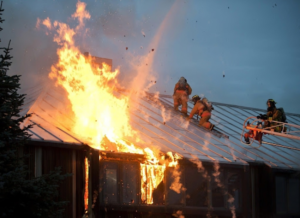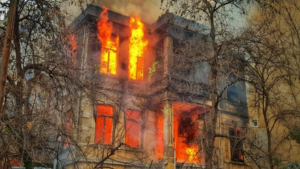When disaster strikes, the aftermath can feel overwhelming. A fire-damaged home is not just a structure marred by flames; it’s a place filled with memories and hopes that may now seem lost. But take heart—selling your fire-damaged property as-is can be your first step toward moving forward. This blog will help you understand the challenges, explore your options, and ultimately turn what seems like a setback into a future filled with opportunity. It covers everything from assessing your property’s value to finding the right buyer. By the end, you’ll have a roadmap to help you make informed decisions and regain control of your situation.

Why Sell a Fire-Damaged Home?
Feeling compelled to restore your home to its former glory is natural. However, selling a burned house in Dallas or wherever you are located is often more practical. Why? First, the financial burden of renovations can be steep. Repairs may be extensive, involving structural work, electrical systems, and aesthetic restorations. These costs can quickly spiral beyond initial estimates, leading to further stress. Selling as-is means you avoid these expenses altogether.
Second, there’s the time factor. Restoring a home is not only costly but also time-consuming. Coordinating with contractors, obtaining permits, and ensuring compliance with building codes can take months or even years. For many, selling as-is offers a quicker path to resolution. Finally, emotional factors play a role. Living in or regularly visiting a fire-damaged home can be a constant reminder of trauma. Selling provides an opportunity to move on emotionally and physically, allowing you to focus on healing and new beginnings.
Evaluating the Condition of Your Property
It’s essential to assess the condition of your property before making any decisions. Here’s how to get started. Begin with a professional inspection. A thorough assessment by an experienced inspector will reveal the full extent of the damage. They will examine structural integrity, electrical systems, plumbing, and more, providing a clear picture of necessary repairs.
Next, consider the costs involved. Based on the inspection report, estimate the necessary repairs and renovation costs. This will help you weigh the financial feasibility of restoring your home versus selling it as-is. Remember that some damages may not be immediately visible, potentially leading to unanticipated expenses. Finally, evaluate market conditions. Research local real estate trends to understand how fire-damaged properties are priced and sold. This information will help you set realistic expectations and make informed decisions about selling as-is. Consult with a local real estate agent for expert insights into the market.
Understanding Your Selling Options
Selling a fire-damaged property may sound daunting, but you have several options. One option is to list with a real estate agent. Experienced agents understand the nuances of selling fire-damaged homes and can guide you. Another route is to sell directly to an investor. This option can be appealing because it typically involves a quicker sale with fewer contingencies. Lastly, consider online marketplaces. Platforms dedicated to buying and selling distressed properties can connect you with interested buyers.
Preparing to Sell Your Damaged Home
Once you’ve decided to sell, preparation is critical to attracting buyers and securing a good deal. Here’s what you need to do: First, gather all necessary documentation. This includes inspection reports, repair estimates, and relevant insurance information. Organizing this paperwork will streamline the selling process and build buyer confidence.
Next, focus on cleaning and decluttering your property. Remove debris, tidy up landscaping, and ensure the interior is presentable to highlight the property’s potential. Finally, all relevant information must be disclosed to potential buyers. Transparency is crucial when selling as-is. Provide potential buyers with accurate information about the extent of the damage and any necessary repairs. Honesty builds trust and can expedite the negotiation process.
Setting the Right Price
Pricing a fire-damaged property requires careful consideration. Here’s how to determine the right price for your home. Start with a comparative market analysis—research recent sales of similar fire-damaged properties in your area to understand their pricing and selling timelines. Consider repair estimates—factor in the costs of necessary repairs when setting your price. Buyers will likely consider these costs when making an offer, so it’s essential to account for them upfront. Finally, be prepared to negotiate. Selling as-is often means accepting offers below market value. However, negotiation flexibility can lead to a quicker sale and a mutually beneficial agreement.
Marketing Your Fire-Damaged Property
Highlight the positives in marketing your property. Focus on your property’s attractive aspects, such as location, lot size, or unique architectural features. Use compelling language and visuals to draw attention to these selling points. Next, leverage online platforms. Real estate websites, social media, and online marketplaces can help you reach a wider audience. Consider working with a real estate agent. They can help you develop a targeted marketing strategy, reaching potential buyers specializing in as-is properties.

Selling a fire-damaged property can be complex and emotional, but it is also an opportunity for growth and new beginnings. You can turn adversity into an advantage by understanding your options, preparing your property, and confidently navigating the selling process. Remember, you’re not alone on this journey. Seek support, connect with others, and take proactive steps toward rebuilding your future. With determination and careful planning, you can move forward and create the life you envision.



